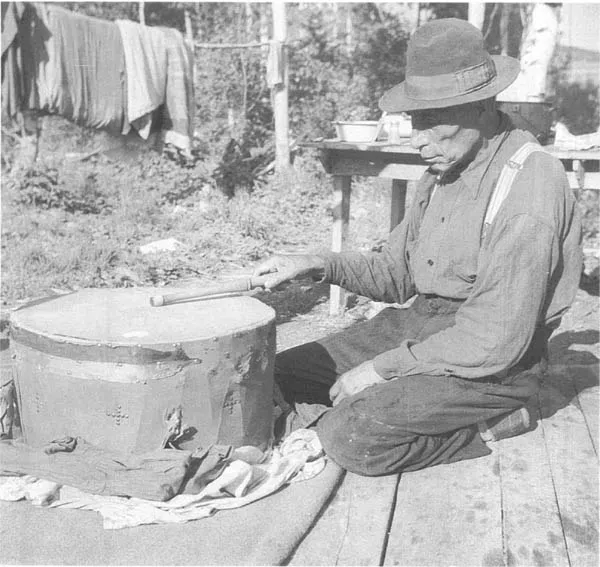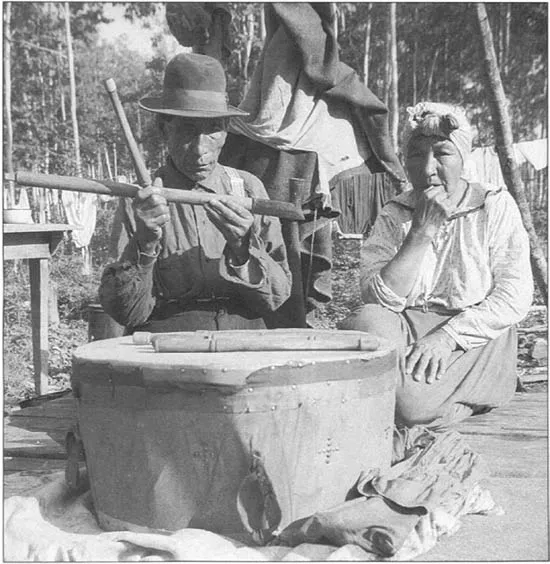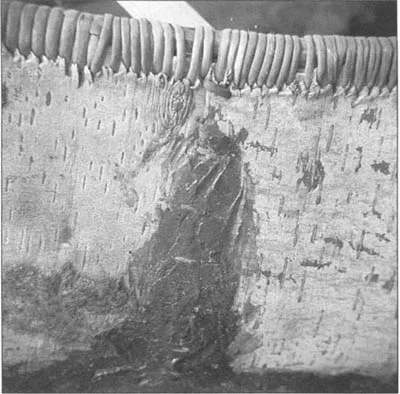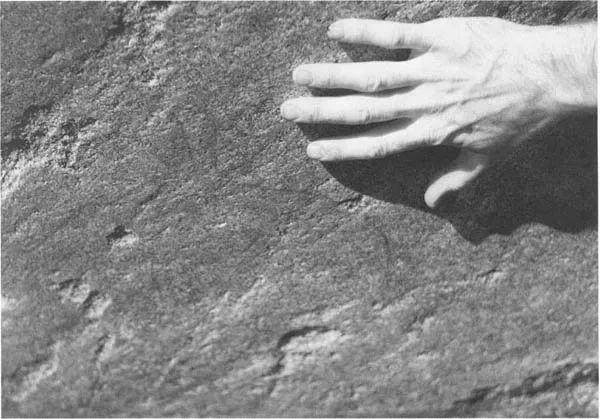![]()
Five
Echoes of a Rich Culture
The passing away of the bow and arrow, the wigwam, the birchbark canoe, the feathered headdress, the leggings is not to be construed as the dissolution of a culture. The material aspects of the traditional native way of life do not reflect all the values, attitudes, and aspirations of the craftsmen or their nation. Rather, the heart, soul, and spirit of the native culture are found in its language and literature. While the physical culture is evolving along with everything else, the language of the Northern Ojibway, Cree, and Oji-Cree remains strong. The invisible essential substance of the culture stays firm.
The traditional material creations – the tools, weapons, dress, means of travel – inspire admiration. How did their creators accomplish so much with so little? They must have been ingenious, hardy people, familiar with the properties of plants and wood and with the habits of animals. And they had to be resourceful and patient to cope. When William Moore of Mattagami Reserve, whose craftsmanship is illustrated in this chapter, made baskets as his ancestors had made them, he was paying them the highest tribute by imitating what they had done.
John Paishk was one of the few people who nurtured the art of drumming through a period when it was nearly lost. Discovery of gold gave rise in the 1930s to the boom town of Red Lake, on the fringes of which rose a shack town of natives attracted by work in the mines. Into that environment Paishk brought his tayawaygun, with its moosehide head stretched over a frame of hoops made from the wood of the black ash tree. When in use, the drum hung from four pegs shaped like walking sticks, and several men sat around drumming in unison.
John Paishk’s drum, drumsticks, and a ceremonial pipe he carved out of soft stone garnered from a deposit in Pipestone Bay of Red Lake.
John Paishk and his wife.
The only birchbark canoe I saw in use was built by Maria Mikenak of Osnaburgh, seen here with a grandson with whom she led a nomadic life paddling to places on Lake Joseph where rabbits, fish, berries, or wild rice could be obtained. When new, her canoe was made entirely of material gathered from the forest, but the last time I saw it I noticed she had repaired it with a wire nail or two and some cotton twine. Maria’s dishes were also made of birchbark, which was folded and sewn into shallow baskets.
Aboriginal rock pictographs, rendered in iron oxide, of indeterminate age and whose meaning is known to only a few, are found throughout Ontario’s Precambrian Shield. This rabbit in the headwaters of the Severn River was, like most of the pictographs, painted from a canoe.
Many pictographs, such as this one in northeastern Ontario, incorporate the thunderbird.
When Albert Carpenter showed me a pictograph site near Sioux Lookout, he took a cigarette from his package of Players, crumbled it, and stuffed the tobacco in a niche in the rock beneath one of the painted figures. Albert said passing natives always left tobacco, which would be gone when they returned, taken by the mamakwayseeuk (little people) whom it was meant to placate. These were hairy little elves who lived inside the rock and who stole fish from natives’ nets if not bribed. Some people, Albert said, had heard drumming coming from the cliff, and others avoided the place altogether.
The Wabino Ceremony
No native group in Ontario clung more stubbornly to their old beliefs than did the Deer Lake Band at the head of the Severn River. There, Christianity remained liberally infused with aboriginal doctrine, and chiefs and councillors invariably were the men whose conjuring and healing powers were recognized as being the strongest. Chief of the band from 1940 to 1968 was Thomas Fiddler, successor to his father, Robert, who had assumed the leadership role in 1907 when his own father, Jack Fiddler, was taken away by the North-West Mounted Police to be tried for the mercy-killing of an insane woman. Traditionally, it was a chief’s duty to perform this distasteful but necessary execution, when an individual posed a threat to the community. Jack Fiddler thwarted the white man’s unbending law by taking his own life in captivity.
Thomas Fiddler was a chief of the old school. His word, uttered in a deep, commanding voice, was law. In his bailiwick, Department of Lands and Forests officers did not call a trappers’ meeting; Thomas Fiddler did, sometimes first letting us cool our heels for a day or two. He opened meetings with an impassioned speech, and although I suspect he had a fair command of English, he always used the language of his people and an interpreter when dealing with government officials.
One evening in June 1952, I was invited by Chief Tom Fiddler to attend the wabino ceremony that he conducted and presided over each spring at Sandy Lake, the main village of the Deer Lake Band. It was a week-long session of drumming, dancing, and feasting which took place in a sixty-foot-long structure of arched birch saplings partially covered with canvas, called a wabinogamick. Inside were two stoves and a long table for cooking and serving moosemeat, fish, and bannock in large quantities.
When I arrived on the scene at about dusk, the hundred or more men, women, and children present had just finished eating. Chief Fiddler then took up a position before a water drum consisting of a metal nail keg over whose open end a piece of wetted, tanned moosehide was tightly stretched. I had listened to the bewitching de...










